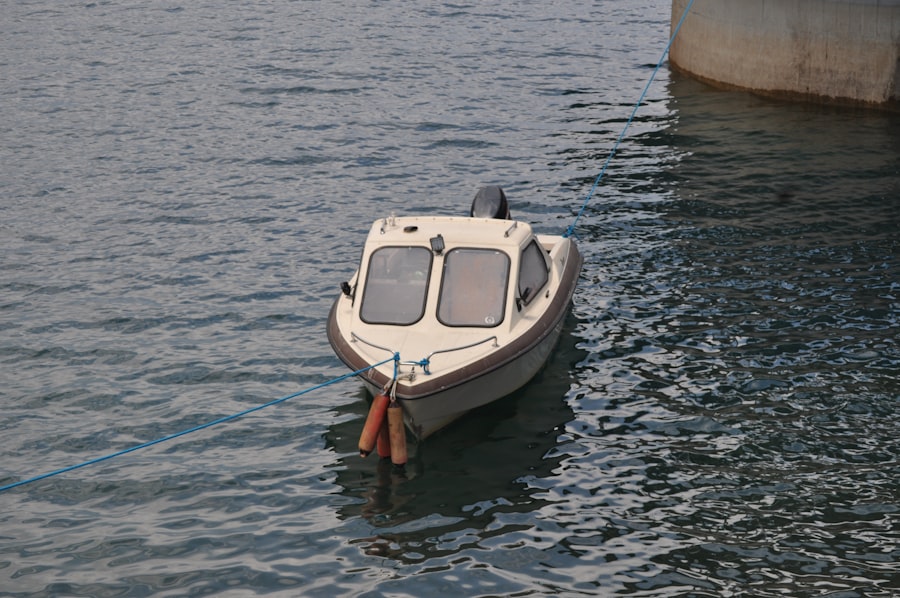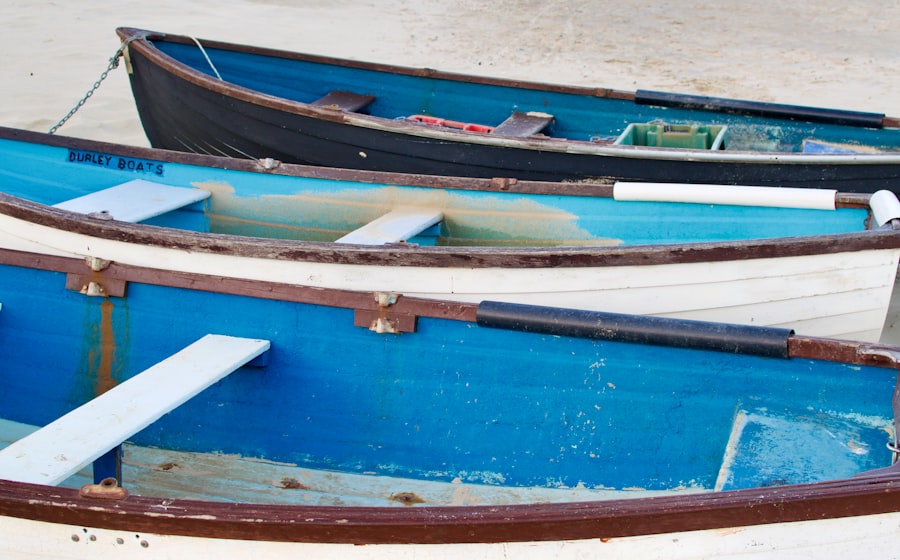When embarking on the journey to purchase a boat, the first step is to thoroughly research the market to understand the various types of boats available. The boating industry is diverse, offering a wide range of vessels designed for different purposes, from leisurely cruising to high-performance racing. For instance, if you are interested in recreational boating, you might consider options such as pontoon boats, which are ideal for family outings and social gatherings on the water.
These boats are characterized by their spacious decks and stability, making them perfect for entertaining guests or enjoying a day of fishing. On the other hand, if your interests lean towards sailing, you may want to explore sailboats, which come in various sizes and designs, from small dinghies to large yachts. Sailboats offer a unique experience, allowing you to harness the wind for propulsion and enjoy a more tranquil connection with nature.
Additionally, there are powerboats, which include everything from small outboard motorboats to larger cabin cruisers. Powerboats are often favored for their speed and ease of use, making them suitable for water sports or quick trips across lakes and coastal waters. Understanding these categories will help you narrow down your options based on your intended use, preferences, and lifestyle.
Key Takeaways
- Research different boat types to find one that fits your needs and lifestyle.
- Set a clear budget to avoid overspending and consider all associated costs.
- Choose reputable sellers by checking reviews and seeking recommendations.
- Thoroughly inspect the boat’s condition to identify potential issues before buying.
- Explore financing, registration, and insurance options to ensure legal and financial readiness.
Setting a Budget: Determining How Much You Can Afford to Spend
Once you have a clear understanding of the types of boats available, the next crucial step is setting a budget. Determining how much you can afford to spend involves more than just the initial purchase price; it requires a comprehensive evaluation of all associated costs. These costs can include maintenance, insurance, storage, fuel, and any necessary equipment or upgrades.
For example, if you are considering a used sailboat, you should factor in potential expenses such as rigging repairs or sail replacements, which can add up significantly over time. To establish a realistic budget, it is advisable to create a detailed financial plan that outlines your income, expenses, and savings goals. This plan should also account for any financing options you may consider, as loans can impact your monthly budget.
Additionally, it is wise to leave some room for unexpected expenses that may arise after the purchase. By taking a holistic approach to budgeting, you can ensure that your boat purchase aligns with your financial situation and long-term goals.
Finding a Reputable Seller: Tips for Locating a Trustworthy Source for Used Boats

Finding a reputable seller is paramount when purchasing a used boat. The integrity of the seller can significantly influence your buying experience and the quality of the vessel you ultimately acquire. One effective strategy is to seek out established dealerships that specialize in used boats.
These dealerships often have a reputation to uphold and may provide warranties or guarantees on their inventory, offering an added layer of security for buyers. In addition to dealerships, online marketplaces and classified ads can be valuable resources for finding used boats. However, it is essential to exercise caution when dealing with private sellers.
Conducting thorough research on the seller’s background and reading reviews from previous customers can help you gauge their reliability. Furthermore, consider asking for references or testimonials from other buyers who have purchased boats from them. A trustworthy seller will be transparent about the boat’s history and condition, providing you with all necessary documentation and answering any questions you may have.
Inspecting the Boat: What to Look for When Examining a Used Boat for Sale
| Inspection Area | What to Look For | Common Issues | Recommended Action |
|---|---|---|---|
| Hull | Check for cracks, blisters, soft spots, and previous repairs | Osmotic blistering, structural damage, water intrusion | Tap hull to detect soft spots; consult a marine surveyor if unsure |
| Engine | Inspect for leaks, corrosion, unusual noises, and maintenance records | Oil leaks, overheating, worn belts, poor performance | Request engine run test; review service history; consider professional inspection |
| Electrical System | Test all electronics, wiring condition, battery health | Corroded connections, dead batteries, faulty switches | Check battery voltage; inspect wiring for wear; test all devices |
| Deck and Hardware | Look for soft spots, loose fittings, rust, and corrosion | Rotting wood, rusted fasteners, damaged rails | Press deck for softness; tighten or replace hardware as needed |
| Interior | Check for mold, mildew, water stains, and upholstery condition | Leaks, dampness, damaged cushions | Smell for mold; inspect under cushions; check for leaks |
| Safety Equipment | Verify presence and condition of life jackets, fire extinguishers, flares | Expired or missing equipment | Replace expired items; ensure compliance with regulations |
| Trailer (if included) | Inspect tires, brakes, lights, and frame condition | Worn tires, faulty brakes, rusted frame | Test brakes and lights; replace tires if worn; treat rust |
Inspecting a used boat is a critical step in the purchasing process that requires careful attention to detail. When examining a boat, start with the hull and exterior. Look for signs of damage such as cracks, blisters, or discoloration that could indicate underlying issues.
A thorough inspection should also include checking the condition of the gel coat and any paintwork; faded or peeling paint may suggest neglect or exposure to harsh conditions. Next, turn your attention to the boat’s mechanical systems. If you’re not well-versed in marine mechanics, consider bringing along a knowledgeable friend or hiring a marine surveyor to assist with the inspection.
Pay close attention to the engine’s condition—look for signs of rust or corrosion and check fluid levels. Additionally, inspect the electrical systems, including wiring and battery condition. A well-maintained boat will have clean wiring without frayed edges or exposed connections.
Finally, don’t forget to check safety equipment such as life jackets and fire extinguishers; these items should be up to date and in good condition.
Negotiating the Price: Strategies for Getting the Best Deal on a Used Boat
Negotiating the price of a used boat can be an intimidating process, but with the right strategies in place, you can secure a favorable deal. Start by conducting thorough research on comparable boats in the market to establish a baseline price range. This information will empower you during negotiations and provide leverage if the seller’s asking price seems inflated.
Be prepared to present your findings confidently while discussing the boat’s condition and any repairs that may be necessary. Another effective negotiation tactic is to remain patient and willing to walk away if the terms do not meet your expectations. Sellers often respond positively when they sense that a buyer is not desperate to make a purchase.
Additionally, consider making an initial offer lower than your maximum budget; this gives you room to negotiate upward while still staying within your financial limits. Building rapport with the seller can also facilitate smoother negotiations; expressing genuine interest in the boat while maintaining a professional demeanor can create a more amicable atmosphere for discussion.
Financing Options: Exploring Different Ways to Pay for Your Dream Boat

Financing options play a crucial role in making your dream of boat ownership a reality. If you do not have sufficient cash reserves to purchase outright, there are several avenues available for securing financing. Traditional bank loans are one of the most common methods; many banks offer specialized marine loans with competitive interest rates tailored specifically for boat purchases.
When considering this option, it is essential to shop around and compare rates from different lenders to find the best deal. Another financing option is through credit unions or specialized marine finance companies that focus exclusively on boat loans. These institutions may offer more flexible terms or lower interest rates compared to traditional banks.
Additionally, some boat dealerships provide in-house financing options that can simplify the purchasing process by allowing you to handle both the purchase and financing in one location. Regardless of which route you choose, it is vital to carefully review all loan terms and conditions before signing any agreements.
Registering and Insuring Your Boat: Understanding the Legal and Financial Obligations
Once you have successfully purchased your boat, understanding the legal and financial obligations associated with ownership is essential. Registering your boat is typically required by state law and involves submitting specific documentation along with payment of registration fees. The requirements can vary significantly from one state to another; therefore, it is crucial to familiarize yourself with local regulations regarding registration processes and deadlines.
In addition to registration, obtaining insurance coverage for your boat is equally important. Boat insurance protects you against potential liabilities arising from accidents or damages while on the water. When selecting an insurance policy, consider factors such as coverage limits, deductibles, and specific protections tailored to your boating activities—whether you plan on using your boat for leisurely cruising or high-speed water sports.
Consulting with an insurance agent who specializes in marine coverage can help ensure that you select a policy that meets your needs while providing adequate protection.
Enjoying Your New Boat: Tips for Making the Most of Your Purchase and Getting Out on the Water
With all the groundwork laid out—from researching types of boats to securing financing—it’s time to enjoy your new vessel fully. One of the best ways to maximize your boating experience is by joining local boating clubs or organizations that offer social events and activities centered around boating enthusiasts. These communities provide opportunities for networking with fellow boaters who can share valuable tips and experiences while also fostering friendships that enhance your time on the water.
Additionally, take advantage of boating courses or workshops offered by local marinas or community colleges. These educational opportunities can help improve your skills in navigation, safety protocols, and maintenance practices—ensuring that you are well-prepared for any adventure on the water. Finally, don’t forget to explore new destinations; whether it’s discovering hidden coves or visiting nearby islands, each outing presents an opportunity for adventure and relaxation alike.
Embrace every moment spent on your boat as an investment in unforgettable memories with family and friends.


